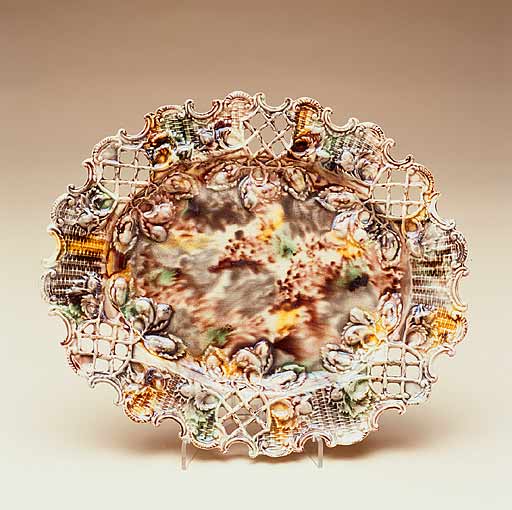dish
Summary
Oval serving plate or basket stand with broad shallow well and sloping rim. Relief-moulded decoration to rim of six panels of basketwork ground alternating with six pierced trelliswork cartouches from which are suspended six groups of high relief hazelnuts on leafy twigs around edge of well. Edge of rim bordered with alternating inward and outward facing C-scrolls. Creamware body dusted with manganese brown, green, grey and yellow oxide daubs bleeding into rich lead-glaze, resulting in irregular mottled and streaked pattern, colours pooling around fruit reliefs. Mottled brown decoration to underside.
Display Label
Clay Clay is an ancient, universal material. Dug out of the ground, it is basic stuff, formed by the elements, earth, water, air and fire. Its use is one of the oldest human artforms. Clay responds to the touch of your hand, it can be pushed and pulled, squeezed and pinched. Clay has no natural form of its own, and can be shaped into almost anything. It is tactile, inviting, immediate and intimate. When soft, it is marked by the slightest touch, yet once fired, it becomes fixed and permanent. A clay pot will survive for thousands of years, bearing the thumbprint of the potter who made it. Some makers are drawn by clay's physical appeal, its sensuous and tactile qualities. For others it is simply a means to an end, an incredibly diverse and expressive medium with the potential to do almost anything.
Object Name
dish
Date Created
1750-1770
accession number
1923.652
Collection Group
Place of creation
Staffordshire
Medium
Credit
Bequeathed by Thomas Tylston Greg
Legal
© Manchester Art Gallery

